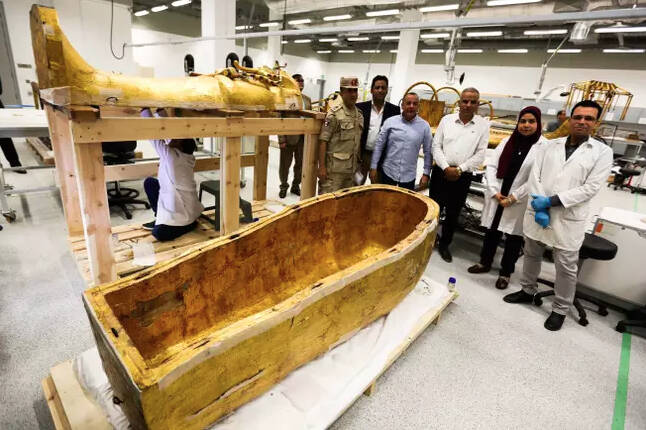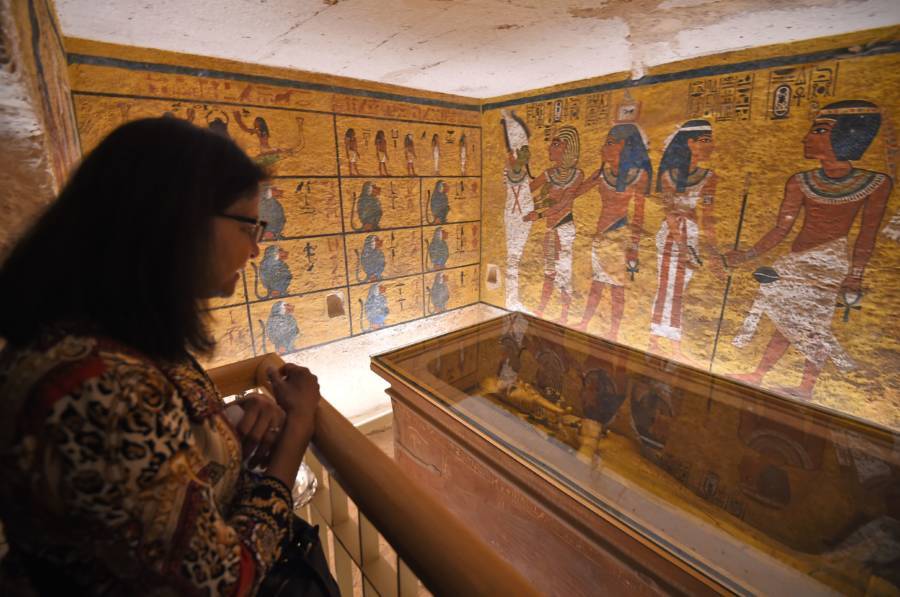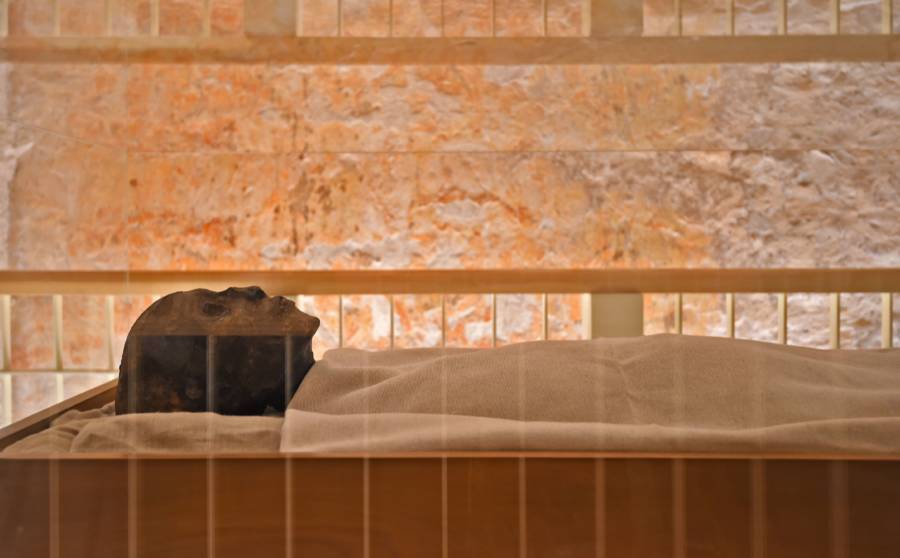After 3,300 Years, king tuts Coffin Leaves His Tomb for the First Time Ever
The outermost coffin that once held the body of King Tutankhamun had never left the 3,300-year-old tomb since the time he was first laid to rest. Even after archaeologist Howard Carter discovered the tomb in 1922, the wooden coffin remained in the Valley of the Kings — until now.
The golden outer coffin of Tutankhamun has been removed from its sterilization tent before it undergoes a painstaking eight-month restoration process.
The gilded sarcophagus of the ancient Egyptian Pharaoh now lies in the restoration laboratory of the Grand Egyptian Museum in Giza, which lies on the outskirts of Cairo, Egypt.

Pictures reveal the intricate reliefs on the foot of the golden sarcophagus which were carved into the outer wood covering of the coffin.
Inside the box-like structure of the sarcophagus were three coffins to house the body of the king. The innermost coffin is made of solid gold, while the middle coffin is made with gilded wood, inlaid with multi-colored glass. The outer coffin is made from wood with a gold covering and stretches to 7.3 feet long.
This is the first time the outer coffin of ‘King Tut’ has been removed from the 3,300-year-old tomb since it was discovered in 1922 by British archaeologist Howard Carter.
Tutankhamun, known as the ‘Golden Pharaoh’, was an 18th dynasty king who ruled from the age of eight to 19. He died in 1324BC and is best known for being the first royal tomb to be discovered almost entirely intact.
He was buried in the Valley of the Kings and discovered by British archaeologist Howard Carter in 1922. His tomb was filled with royal treasures, including a dagger made from a meteorite.
His tomb contained three coffins nestled within one another. Shortly after it was discovered both the inner and middle caskets were transferred to the Egyptian Museum in Cairo, while the outer gilded coffin was left behind.
In July, the casket was removed in tight security operation and fumigated for seven days. Restoration will now continue using non-invasive equipment to repair cracks to the golden layers and fix weakened areas

After mechanical and chemical engineering has taken place, any layers of plaster that have broken away will be replaced in their original location.
Once the work has been completed, the coffin will be on display in the Grand Egyptian Museum – the first time the three caskets have been displayed together since their discovery.
Some of the stunning artifacts are going on display at the Saatchi Museum in London in November to raise funds for a new Egyptian museum, giving members of the public opportunity to see them before they are stowed away forever.






